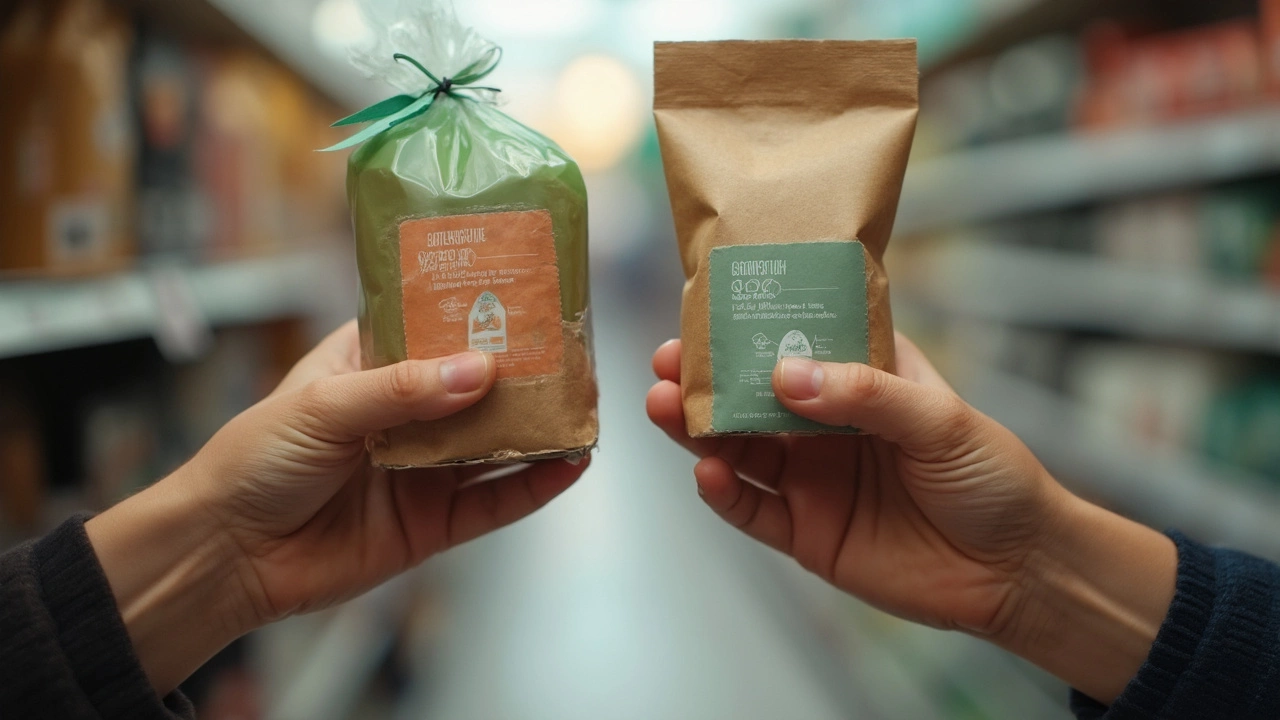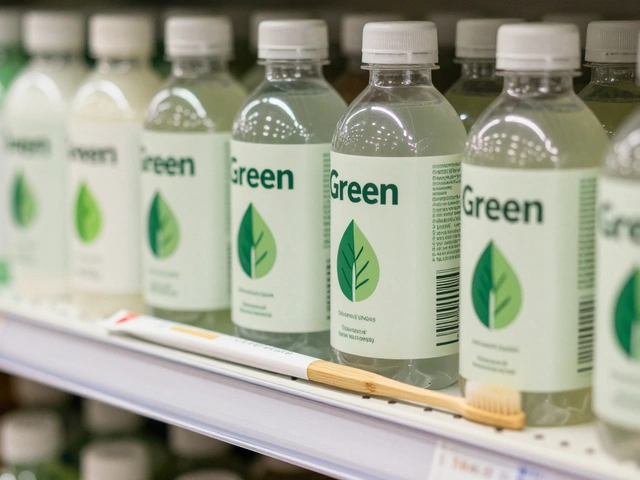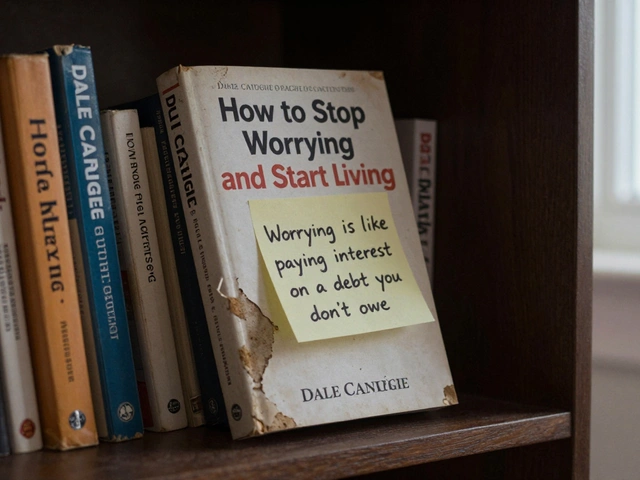Ever found yourself holding a 'green' product, feeling a little suspicious about the leaf logo and fancy buzzwords? You’re not alone. Eco-friendly isn’t just a trend—it’s supposed to mean real benefits for the planet, but the truth can get buried in marketing fluff.
So, what really makes something eco-friendly? It boils down to how a product is made, what it’s made of, and how it affects nature before, during, and after you use it. For example, a bamboo toothbrush sounds good because it’s not plastic, but it’s only actually eco-friendly if the bamboo was grown without nasty chemicals and the bristles are compostable or recyclable too.
Being eco-friendly means thinking about the full journey of the product: raw materials, how it’s manufactured, how it travels, and even what happens when it’s tossed out. Quick tip—check for clear info from the company. If they share details on sourcing and end-of-life options (like recycling or composting), that’s a good sign. Next, let’s unpack exactly what these claims mean and how you can tell if a product walks the talk.
- The Real Meaning of Eco-Friendly
- Ingredients and Materials Matter
- Packaging: More Than Just a Box
- How Products Are Made
- Spotting Greenwashing
- Everyday Tips to Shop Greener
The Real Meaning of Eco-Friendly
“Eco-friendly” gets tossed around a lot, but what does it actually mean? At its core, it means something that doesn’t harm the planet, from the start of its life cycle to the very end. It's all about lowering the damage to the environment at every stage—making, transporting, using, and finally getting rid of it. No magic, just less waste and less pollution.
A product calling itself eco-friendly should check off some key boxes:
- It’s made with responsibly sourced materials (like certified organic cotton rather than pesticide-soaked fibers).
- The production uses less energy and water, and avoids harsh chemicals.
- It’s built to last longer or can be reused (think glass water bottles instead of single-use plastic ones).
- It can be recycled, composted, or safely returned to nature at the end (not just tossed in the trash).
If you’re after the real deal, look for certifications like USDA Organic, Fair Trade, FSC (for wood and paper), or Energy Star. These aren’t just stickers—they mean someone checked up on things. Transparency also matters. Brands that share where their stuff comes from and how it’s made are usually doing more for planet than those who just slap on a green label and call it a day.
Here’s a quick reality check: The World Bank reported that global municipal solid waste is expected to grow to 3.4 billion tons by 2050. Swapping to eco-friendly options for just basic products like bags, bottles, or toothbrushes can help slow that mountain of trash.
Bottom line: if a product’s claim sounds fuzzy or too good to be true, get curious. Dig a bit deeper, and see if their idea of “eco-friendly” checks out against these basics.
Ingredients and Materials Matter
Here’s the truth: what goes into a product is the biggest clue about whether it’s truly eco-friendly or just dressed up to look the part. When you dig into the details, the greener the material, the smaller the environmental footprint.
First up, think about renewability. Is the stuff used in a product coming from a resource that can be replaced quickly, like bamboo, cork, or organic cotton? Fast-growing plants need less land and water, and they help tackle carbon in the air. Recycled materials—like plastic bottles turned into t-shirts or shoes—also keep trash out of landfills and cut down on the need for new raw stuff.
Avoid materials that depend heavily on chemicals or intense farming. Regular cotton farming, for example, guzzles about 16% of the world’s pesticides even though it only uses 2.5% of farmed land. That’s wild, right? Organic cotton goes easier on the earth and your skin.
| Material | Eco-Friendliness | Common Uses |
|---|---|---|
| Bamboo | Highly renewable, low pesticide use | Utensils, textiles, toothbrushes |
| Organic Cotton | No synthetic chemicals, less water | Clothes, reusable bags |
| Recycled Plastic | Reduces landfill waste, saves energy | Bottles, clothing, decking |
| Conventional Plastic | Fossil fuel-based, non-biodegradable | Packaging, disposables |
| Aluminum | Infinitely recyclable | Cans, some packaging |
Another thing? Traceability. If you can find out where and how the raw ingredients were sourced, there’s less risk of hidden pollution or harsh labor practices. Some brands provide QR codes or details right on the label.
- Look for certifications like Fair Trade, USDA Organic, or FSC (Forest Stewardship Council) to spot truly eco-friendly picks.
- Check if the product skips harmful stuff like PVC, BPAs, or heavy metals. These don’t just hurt nature—they stick around for ages and can mess with our health.
- If you see natural materials, make sure they’re responsibly sourced. Wool or leather may sound natural, but poorly managed farms can do serious environmental damage.
The key takeaway: what your product is made from and how those ingredients were harvested says more about its green claims than any trendy label ever could.
Packaging: More Than Just a Box
Packaging has a bigger impact than you might think. Around a third of household waste ends up being packaging, and most of it still winds up in landfills. Sometimes, the packaging can actually be worse for the planet than the product itself.
What makes packaging eco-friendly? First, look at what it's made of. Recycled paper, plant-based plastics, glass, or aluminum are better choices because they're often easier to recycle or reuse. Avoid mixed materials—stuff like cardboard stuck to plastic—because those are tricky to separate and usually just get tossed.
- Minimal Packaging: Less is more. Companies that skip the extra plastic wrapping or opt for smaller boxes are onto something good.
- Easy to Recycle: Check for clear recycling symbols, and see if your local center actually accepts them. For example, black plastics often aren’t recycled even if they have a triangle symbol.
- Compostable or Reusable Options: Compostable bags or refillable containers mean less trash and fewer one-and-done items.
Beware of fancy-looking 'eco' packaging that’s just for show. A brown cardboard box lined with plastic isn’t really helping the planet. Dig into the details on the package or brand website—they should tell you what it's made from and what to do with it once you’re done.
Here’s a quick peek at how different packaging types stack up for the environment:
| Packaging Type | Recyclable | Reusable | Compostable |
|---|---|---|---|
| Plastic (PET, HDPE) | Sometimes | No | No |
| Glass | Yes | Yes | No |
| Aluminum | Yes | Yes | No |
| Paper/Cardboard | Yes | Sometimes | Sometimes |
| Bioplastics | Rarely | No | Sometimes |
If you want to make better choices, look for products with little or no packaging, or packaging you know you can recycle or compost. Bring your own reusable bags or containers when you can—it all makes a difference.

How Products Are Made
When a product claims to be eco-friendly, it’s not just about what it’s made from—it’s also about how it gets made in the first place. The whole journey, from raw material to finished product, shapes how much of an environmental punch it packs.
The first thing to look at is the source of the materials. Is the cotton organic or just regular? Was the wood certified by the Forest Stewardship Council (FSC)? Raw materials matter a ton—stuff that’s local and renewable leaves a smaller footprint than things hauled from halfway across the globe.
The manufacturing process is another biggie. Some factories run on 100% renewable electricity and recycle their water, while others still use dirty energy and pump waste into rivers. That's a clear difference. For example, Patagonia makes some jackets with recycled bottles, using far less energy and water than traditional polyester.
- Eco-friendly factories often cut pollution by using solar or wind power.
- They look for ways to reuse waste or upcycle leftover scraps.
- Lots of brands now track and share their total carbon emissions – transparency is huge.
Working conditions count, too. Ethical brands care about workers’ safety and pay—not just the planet. If a company dodges these basic human rights, it’s not really part of the solution.
| Feature | Regular Product | Eco-Friendly Product |
|---|---|---|
| Energy Used | Often fossil fuels | Solar, wind, or hydro |
| Waste Management | Landfill or incineration | Recycling or reuse |
| Worker Safety | Sometimes poor | Proper standards |
So if you spot a brand being open about their supply chain, factory energy, and labor practices, that’s a positive sign. Don’t be shy about asking companies for details—real eco-friendly brands are happy to show they’re doing things right.
Spotting Greenwashing
Greenwashing is a sneaky tactic where companies make their stuff look more environmentally friendly than it actually is. They use words like “natural”, “eco”, or “plant-based” without many facts to back them up. It’s a big problem for anyone trying to shop smarter, because it turns eco-friendly into just another marketing buzzword.
Want a good example? Fast fashion brands love to stick a tiny “sustainable collection” tag on a shirt, but the rest of their business still pumps out landfill clothes and pollution. Sometimes companies put a green leaf icon on their packaging just to make you feel better, even if nothing else has changed. According to a study from the European Commission in 2021, over 40% of companies were making environmental claims that they couldn’t back up with proof.
“If you can’t find real information about how a product is made and where it comes from, there’s a good chance the brand is just trying to look greener than they are,” says Lindsay Dahl, clean products advocate and sustainability expert.
Here’s how you can avoid falling for greenwashing traps:
- Look for real certifications, like Energy Star, Fair Trade, or USDA Organic. Be careful, though—some “certifications” are made up by brands themselves.
- Check the company’s website for details on their materials, supply chain, and actual environmental goals. If they’re serious, this stuff will be easy to find.
- Watch for vague terms. “Non-toxic” and “eco-safe” sound great, but if there’s no explanation, it probably means nothing.
- Be wary of packaging that’s only green or says “environmentally friendly” with no actions behind it. A green label doesn’t automatically equal a green product.
Here’s a quick peek at what to trust and what to question:
| What to Trust | What to Question |
|---|---|
| Recognized third-party certifications | Homemade green logos |
| Specific product details (like "100% recycled aluminum") | Vague claims (“made with recycled content”) |
| Transparency about company practices | No real proof, just marketing slogans |
Ignore the hype and dig just a little deeper. If a brand is proud of their impact, they’ll tell you exactly what they’re doing. No guesswork needed.
Everyday Tips to Shop Greener
If you want to make smarter choices when shopping, you don’t need to overhaul your entire life. Small, consistent changes add up. Here’s how you can actually make a difference every time you buy something:
- Eco-friendly claims? Dig deeper than the packaging—look at the brand’s website for real info. Genuine companies usually share details about their supply chain and don’t hide how they source their materials or where their products end up after use.
- Swap single-use products for reusable ones. For example, using a stainless-steel water bottle slashes plastic waste. Research from the Environmental Protection Agency (EPA) shows the average American uses about 167 disposable water bottles each year, but just by owning a reusable bottle, you can cut your share of waste dramatically.
- Check labels for third-party certifications such as USDA Organic, Fair Trade, or Energy Star. These aren’t just stickers—they actually mean the product meets specific environmental or ethical standards.
- Choose products with minimal or recyclable packaging. That fancy shiny box? It probably can’t be recycled. Cardboard, plain paper, and glass are usually safer bets.
- Shop local when you can. When products travel less, their carbon footprint shrinks. Picking up veggies from a nearby farmer’s market or buying locally made soap helps cut out a whole lot of transport emissions.
- Don’t fall for greenwashing. If something claims to be “all natural” but gives no proof, be skeptical. Real transparency, not buzzwords, shows a product’s true impact.
- Buy less overall. It sounds boring, but every product we don’t buy saves resources and reduces waste.
Here’s a quick snapshot that shows how just a few swaps can help:
| Common Item | Eco-Swap | Impact |
|---|---|---|
| Plastic shopping bags | Reusable cloth bags | One bag can save 500+ single-use bags a year |
| Paper towels | Washable rags | Cuts down on landfill waste and tree use |
| Disposable coffee cups | Reusable mug | Saves hundreds of cups yearly |
Last tip: Spread the word. The more friends and family get into eco-friendly habits, the more normal it becomes. Even one small change at a time, multiplied by lots of people, makes a massive difference.










